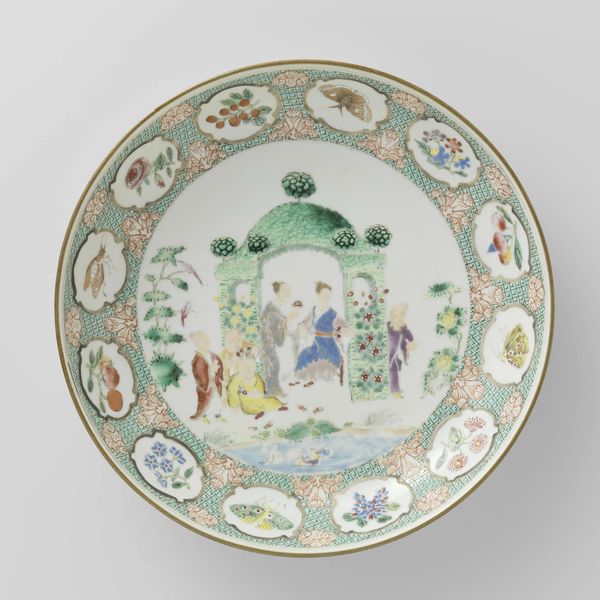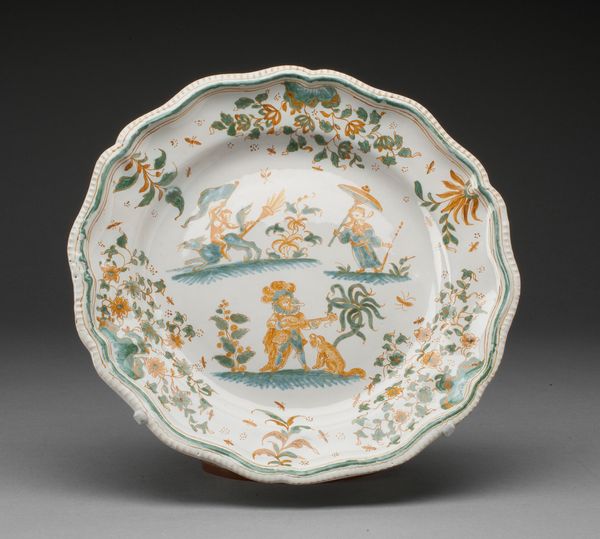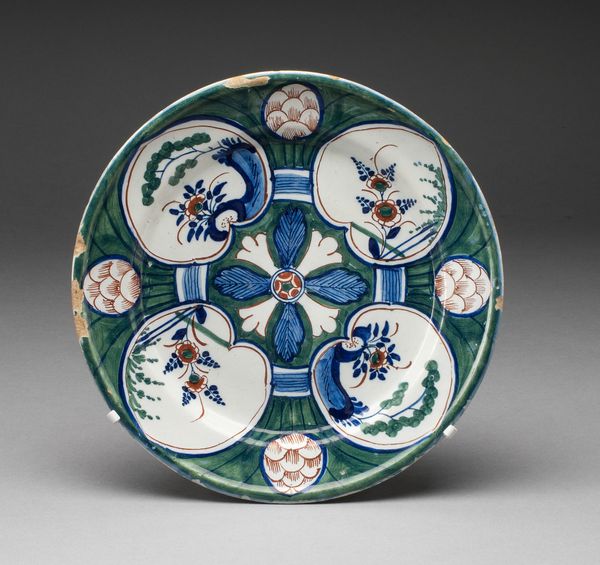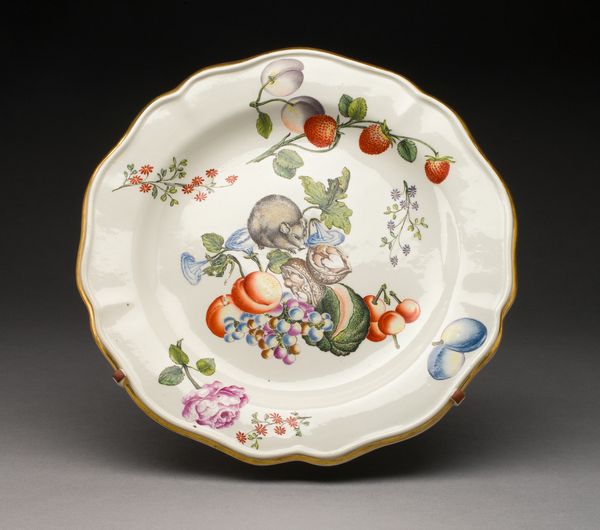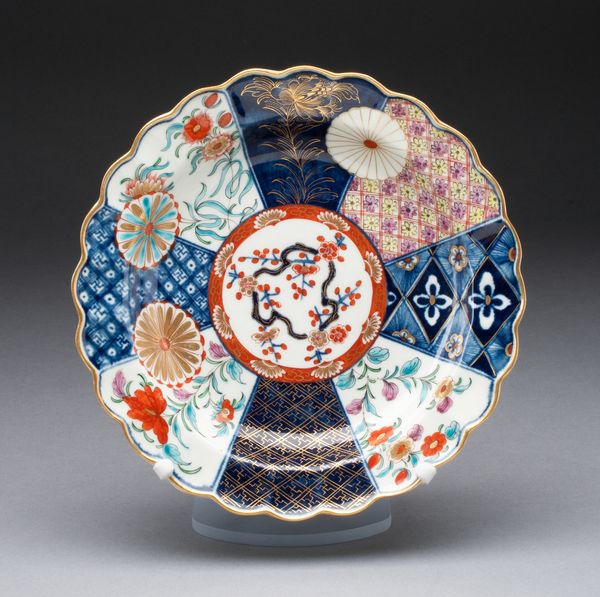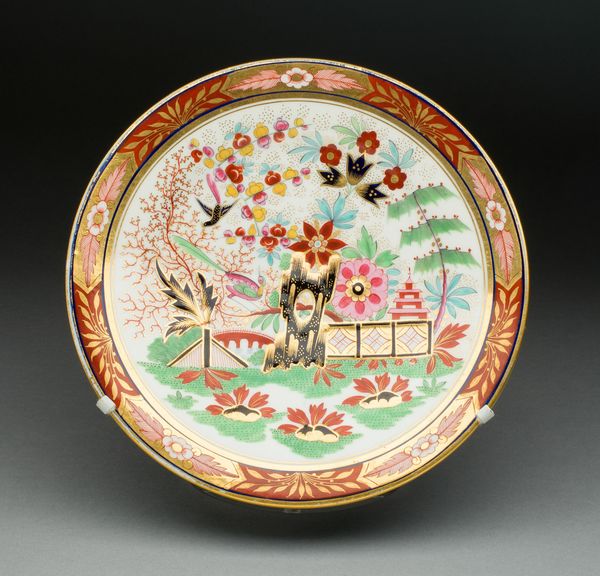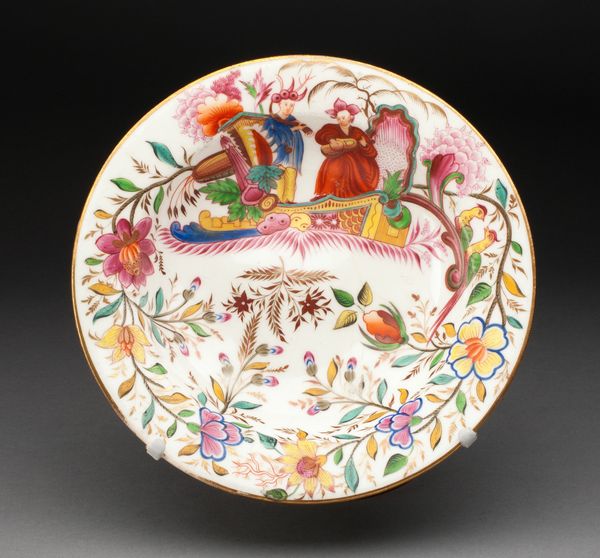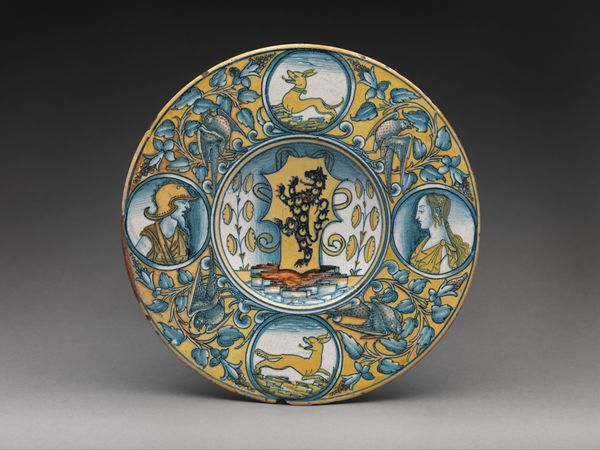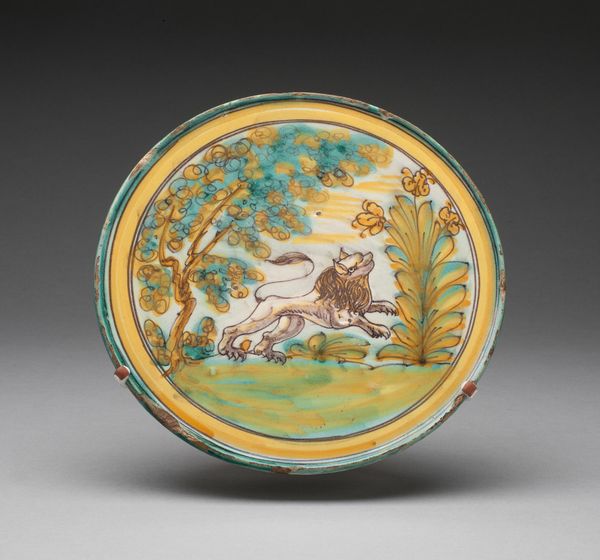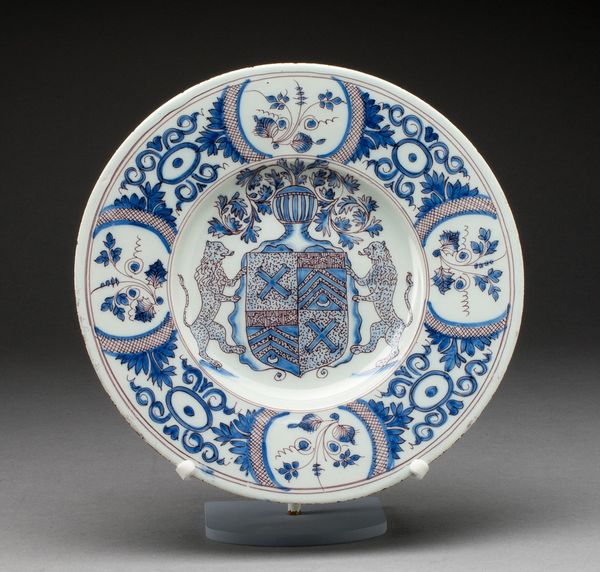
ceramic, porcelain
#
human-figures
#
ceramic
#
porcelain
#
ceramic
#
genre-painting
#
decorative-art
Dimensions: Diameter: 11 in. (27.9 cm)
Copyright: Public Domain
This vibrant plate was made in China, likely in the 1730s. The design was conceived by Cornelis Pronk, an artist working for the Dutch East India Company. It’s made of porcelain, a material prized for its smooth, white surface, which beautifully receives painted decoration. The plate's decoration is a clue to the complex global trade of the 18th century. Porcelain itself is made from kaolin clay, found in only a few places in the world, one of them being China. The skilled labor required to form, fire, and paint this plate was highly specialized. The design, though, came from Europe, reflecting the tastes of consumers eager for exotic goods. Pronk never traveled to China himself. He created designs in Delft, which were then sent to China to be copied onto porcelain. This speaks to the intense demand for these wares, and the complex relationship between artistic invention and industrial production. Consider, as you look at this plate, the many hands and minds that contributed to its creation.
Comments
No comments
Be the first to comment and join the conversation on the ultimate creative platform.
